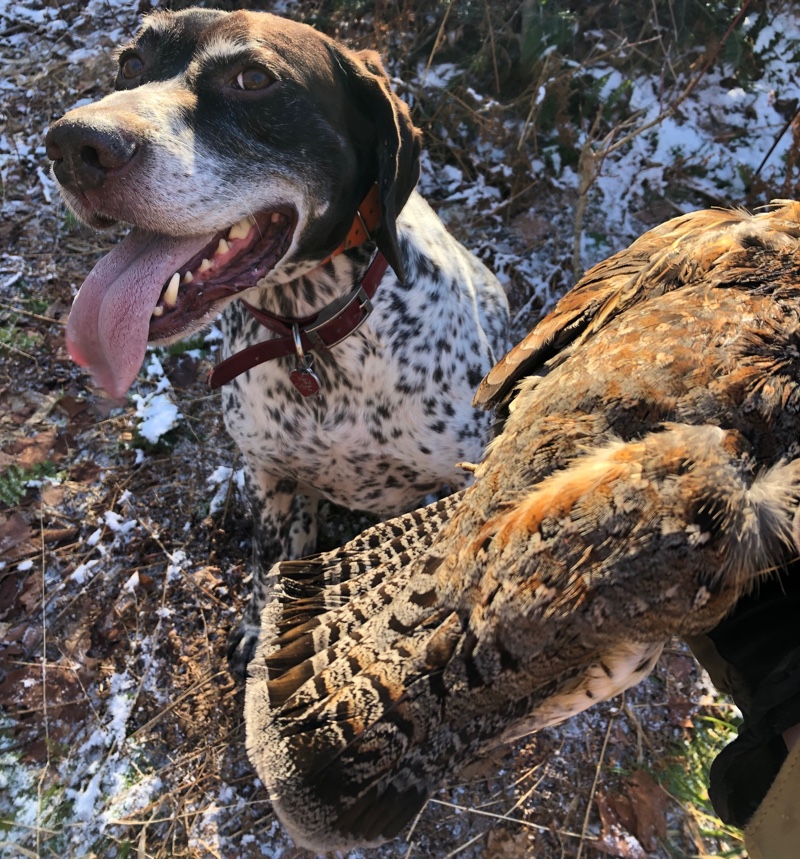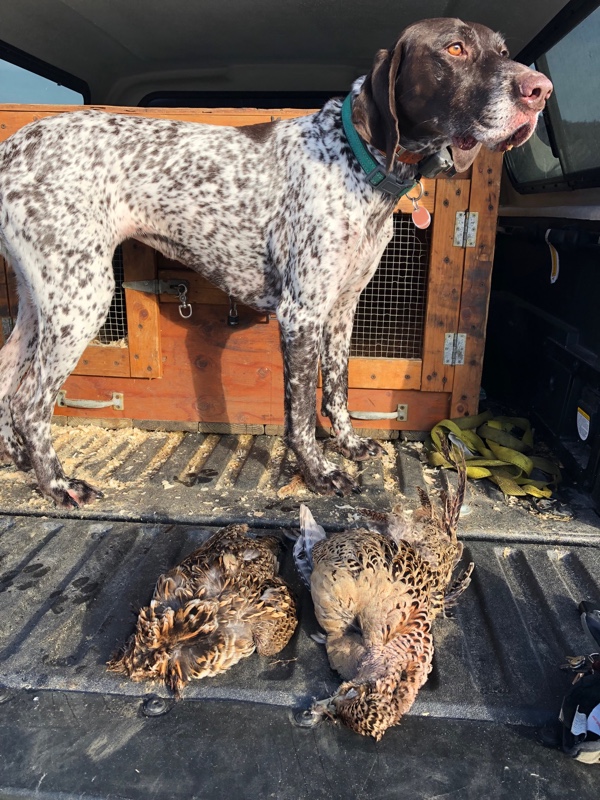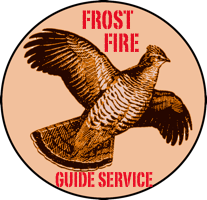
December Birds
However, when the weather is uncharacteristically autumn-like at a time of the season when we should be getting used to winter in the north country, it forces one to get out there another time or two. Less than three weeks left in the New Hampshire and Vermont grouse hunting seasons (both close on 12/31), so we're in the stretch drive. There's only so long that this weather will hold out though ... eventually Old Man Winter and Mother Nature are going to conspire against us.
The number of birds moved at this time of the season is usually modest: six in three hours today, three in two hours of hunting yesterday, and six grouse in a session a couple of weeks ago. Mileage will be comparable to an early season excursion, so expect to walk plenty in your search for late season birds.
While it may not look like winter out there at the moment, it certainly feels like it. With temps in the mid-20's, and a biting wind at times, it's been plenty cold in our excursions, and certainly a reminder that winter could come in full force any moment. To combat the effects of the cold, multiple base layers, winter hat, heavy socks, and hand warmers in the shooting gloves make the hunting tolerable, and you can always go uphill in case none of that is working.

Millie was well camouflaged on this pheasant point a couple weeks ago. It was a "bonus" bird for us, and she was rewarded for her staunch point on it.

Millie had a good session during her time in the woods this day. She pointed the pheasant, and flushed the grouse back at me for a makable shot. She's still a work in progress.
One of the more remarkable aspects of late season grouse hunting is just how quiet it is out there. As most bird hunters have vacated the woods for the year, there are literally no shots heard from other hunters. It's just you, the dogs maneuvering through the cover, and maybe a bell ringing or beeper going off. Now is a good time to scout out new areas or to finally pull over and check that covert that you've been driving by all season and never stopped to look at. Late season is a great time to get a head start on next year.
One common denominator with grouse cover at this time of year is that it's usually thick, and dominated by "horizontal cover". Blowdowns, areas of spruce and thickets are all a hallmark of winter time grouse cover. If you know the food sources in these covers, all the better, but as in the case of the bird I shot today (whose crop was loaded with catkins), a predominance of bud and catkin-bearing hardwoods might be all the food sources you need.
There might be a couple more days to get out in the woods this week, and then it looks like winter arrives in earnest this Friday and Saturday. That could be the end of the grouse season for us ...
